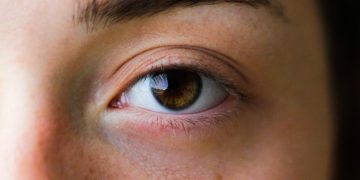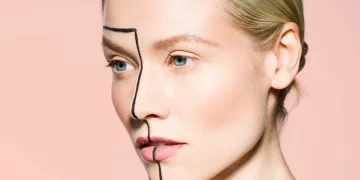In the landscape of modern aesthetics, few features have garnered as much cultural and clinical attention as the jawline. More than just a passing fad, the pursuit of a defined, sharp jawline represents a convergence of evolutionary biology, social psychology, and advanced cosmetic science. This chiseled feature is universally associated with youth, health, strength, and attractiveness. But what is the true science behind this powerful aesthetic ideal? And how are modern techniques safely and effectively helping individuals achieve it? The journey from a soft or recessed lower face to one of defined contours is not a matter of simple augmentation; it is a sophisticated process rooted in an understanding of anatomy, aging, and the delicate principles of facial harmony.
This article deconstructs the science of jawline sculpting, moving beyond the social media trend to explore the medical interventions driving it. We will delve into the specific roles of two powerhouse tools—dermal fillers and botulinum toxin—and underscore the critical, often-overlooked foundation upon which all successful outcomes are built: a comprehensive facial harmony analysis.
The Structural Pillars: Jawline Fillers as the Architect’s Tool
Dermal fillers, particularly those based on hyaluronic acid (HA), are the primary instruments for building and enhancing jawline definition. However, their function is far more nuanced than simply “filling” a line. To understand their application is to understand the complex anatomy of the lower face and the transformative effects of restoring lost volume and support.
The jawline is not a single structure but a confluence of several anatomical components that change with age:
- The Mandibular Bone: The jawbone itself can resorb with age, losing volume and projection, much like the bones in our hands.
- Fat Pads: Superficial and deep fat pads in the lower face descend and atrophy, leading to a loss of support and the formation of jowls.
- Ligaments: Ligaments, such as the mandibular ligament, act like anchors. With time, they loosen, allowing tissues to sag and creating the pre-jowl sulcus—a shadowy indentation that often precedes the formation of full jowls.
Jawline filler is a strategic, structural procedure designed to counteract these changes. A skilled practitioner uses a high-G’ (high cohesivity and viscosity) filler, which is thick and moldable enough to provide structural support. The injection is not a single line along the jaw but a multi-point placement that aims to:
- Recreate the Mandibular Angle: The sharp angle where the jaw turns upwards towards the ear is a key marker of youth and definition. Precise filler placement here can restore this angle, providing a foundational pivot point for the entire lower face.
- Augment the Mandibular Body: This is the long, horizontal bone from the angle to the chin. Filler is placed along this body to build a strong, continuous, and defined “rail,” combating the soft, undefined look.
- Camouflage the Pre-Jowl Sulecus: By carefully filling the depression just anterior to the jowl, the practitioner can create a smooth, seamless transition from the chin to the jawline, effectively visually erasing the early signs of sagging.
- Support the Soft Tissues: The strategically placed filler acts as a scaffolding, providing a lattice upon which the overlying soft tissues can rest, leading to a subtle lifting effect on the jowls and the lower face.
The result is not merely a more defined jaw but a restoration of the lower facial framework. This re-supporting of the architecture can have a profound impact on the perceived youthfulness and strength of the entire face.

The Relaxing Agent: Botulinum Toxin and the Art of Subtle Contouring
While fillers are the tool for building up, botulinum toxin (e.g., Botox, Dysport) is the tool for refining down. Its role in jawline sculpting is often misunderstood but is equally critical for a polished, natural-looking result. The primary target for botulinum toxin in this context is the masseter muscle.
The masseter is a powerful, rectangular-shaped muscle at the back of the jaw, responsible for chewing. Its size and activity level vary greatly from person to person. Hyperactivity or hypertrophy (enlargement) of this muscle can be caused by genetics, stress, or bruxism (teeth grinding), and it leads to a wide, square, or overly heavy-looking jaw. This can obscure the underlying bony definition, no matter how sharp the mandible may be.
The science behind masseter reduction with botulinum toxin is elegant:
- Neuromuscular Blockade: Botulinum toxin is injected directly into the masseter muscle. It works at the neuromuscular junction, blocking the release of the neurotransmitter acetylcholine.
- Chemical Denervation: Without the signal from the nerve, the muscle fibers cannot contract.
- Muscle Atrophy: When a muscle is no longer being used, it naturally undergoes a process of disuse atrophy. It shrinks in volume and bulk over time.
A series of injections, typically every 3-6 months, leads to a gradual and natural-looking slimming of the lower face. As the masseter muscle recedes, the underlying jawbone becomes more visible, creating a smoother, more V-shaped, or tapered contour from the cheeks to the chin. This is not about creating a weak jaw; it is about revealing the jaw’s natural definition by reducing the soft tissue mass that obscures it. Furthermore, for patients who grind their teeth, this treatment offers the dual benefit of aesthetic enhancement and relief from the symptoms of bruxism, such as jaw pain and headaches.
The Master Plan: Facial Harmony Analysis as the Non-Negotiable First Step
The most sophisticated tools are useless—and potentially detrimental—without a master plan. This is why facial harmony analysis is the absolute cornerstone of safe and effective jawline sculpting. It is the scientific and artistic process that ensures any enhancement complements the individual’s unique facial anatomy rather than fighting against it.
A comprehensive analysis goes far beyond looking at the jaw in isolation. It considers the entire face as an interconnected system. Key principles include:
- The Rule of Thirds: The face is vertically divided into three equal parts: from the hairline to the glabella (between the eyebrows), from the glabella to the subnasale (base of the nose), and from the subnasale to the menton (bottom of the chin). An ideal jawline exists in harmony with these proportions. For instance, a weak chin (a short lower third) will make even a well-defined jawline appear recessed and unbalanced.
- The Golden Ratio and Fibonacci Spiral: While not a rigid rule, these mathematical principles of beauty provide a framework for analyzing balance. The width of the jaw should be in pleasing proportion to the width of the cheekbones and the forehead. A practitioner will assess whether enhancing the jaw will bring the face closer to these harmonious proportions or push it into an unnatural, overly masculine, or “heavy” appearance.
- Gender-Specific Ideals: Male and female jawline aesthetics often differ. A masculine jawline typically features a more pronounced, almost 90-degree mandibular angle and a broader, squarer chin. A feminine jawline tends to have a smoother, more tapered contour with a less acute angle and a narrower, softer chin. A skilled analysis respects and enhances these gender-specific characteristics.
- Dynamic Assessment: The face is not static. A practitioner must observe how the jawline and surrounding tissues move during talking, smiling, and other expressions. This dynamic assessment can reveal underlying asymmetries, muscle imbalances, and how proposed treatments might affect natural expressiveness.
This analytical process informs every decision: whether to use filler, toxin, or a combination of both; where to place every drop of product; and how much to use. It prevents the creation of an isolated, “stamped-on” jawline that looks artificial and disconnected from the rest of the face. The goal is always a balanced, natural-looking result where the enhanced jawline works in concert with the eyes, nose, cheeks, and chin to create a more attractive and youthful, yet authentic, version of the individual.
Conclusion: The Symphony of Sculpture
The trend of the sharp jawline is more than a cultural moment; it is a demonstration of the maturation of aesthetic medicine. It shows a move away from isolated feature correction and toward a holistic, architectural approach to facial rejuvenation and enhancement. The science is clear: achieving this look is a sophisticated interplay of structural augmentation with fillers, functional refinement with botulinum toxin, and, most importantly, the guiding intelligence of facial harmony analysis.
When performed by a practitioner who is both a scientist and an artist, jawline sculpting becomes a powerful procedure. It can restore a youthful silhouette, project an image of strength and health, and bring the entire face into a state of beautiful, balanced proportion. The sharp jawline is not created in a vacuum; it is sculpted through a deep understanding of the intricate symphony that is the human face.












































